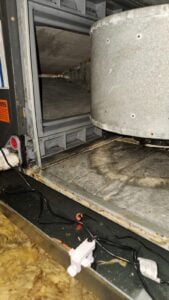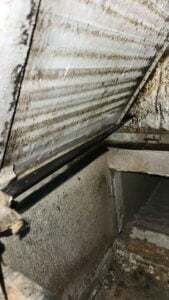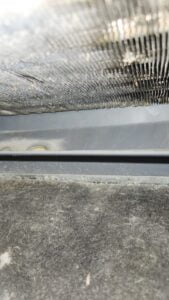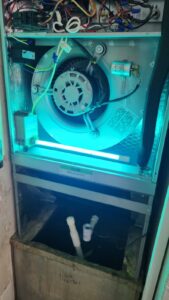What is Dirty Sock Syndrome?
In the world of HVAC maintenance and repair, there are few issues as uniquely troublesome as Dirty Sock Syndrome. This oddly named problem is not only a common concern among homeowners but also a source of discomfort and frustration. In this comprehensive guide, we’ll delve into what Dirty Sock Syndrome is, its causes, impacts, and most importantly, how to fix it.
Understanding Dirty Sock Syndrome
What Exactly is Dirty Sock Syndrome?
Dirty Sock Syndrome in HVAC systems refers to a situation where your heating, ventilation, and air conditioning system emits a foul, musty, or moldy smell, reminiscent of dirty laundry or, more specifically, dirty socks. This unpleasant odor is most noticeable when the system starts up or when it switches between heating and cooling modes.
The Science Behind the Smell
The primary culprit behind Dirty Sock Syndrome is the growth of bacteria and mold on the evaporator coil and in the ductwork of the HVAC system. When the air conditioning unit cools the air, condensation occurs on the evaporator coil. This moisture, combined with any dust, pollen, or organic material that gets past the air filter, creates an ideal breeding ground for microbial growth, which is responsible for the distinctive musty odor.

Causes of Dirty Sock Syndrome
Dirty Sock Syndrome in HVAC systems is primarily caused by the growth of bacteria and mold within the system. This growth is typically fueled by a combination of factors:
- Moisture Accumulation: The most significant factor contributing to Dirty Sock Syndrome is moisture, particularly around the evaporator coils. When the air conditioning unit cools the air, condensation occurs on these coils. If this moisture does not evaporate or drain properly, it creates an ideal environment for mold and bacteria to thrive.
- Organic Material Buildup: Dust, pollen, pet dander, and other organic materials that circulate through the HVAC system can accumulate on the moist surfaces of the coils and in the ductwork. These organic materials provide food for bacteria and mold, aiding in their growth.
- Inadequate Maintenance: Regular maintenance, such as changing air filters and cleaning coils, is crucial in preventing Dirty Sock Syndrome. Neglecting these tasks can lead to an excessive buildup of dirt and organic matter, which, combined with moisture, results in microbial growth.
- Poor Airflow: Restricted airflow can exacerbate the problem. Clogged filters, improperly sized ductwork, or any obstruction that limits air movement can create pockets of stagnant air and moisture, further encouraging microbial growth.
- Temperature Fluctuations: Frequent or abrupt changes in temperature, such as when a system switches between heating and cooling modes, can contribute to condensation and moisture problems, especially in humid climates.
- Humidity Levels: High humidity levels, both inside and outside the home, can increase the amount of moisture in the air and within the HVAC system, promoting the growth of mold and bacteria.
- Age and Design of the HVAC System: Older systems or those with design flaws may be more prone to issues like poor drainage or inadequate airflow, making them more susceptible to Dirty Sock Syndrome.
Health Impacts
Dirty Sock Syndrome, characterized by a musty or moldy smell emanating from HVAC systems, can have several health impacts, particularly for individuals with pre-existing respiratory conditions or sensitivities. Here are some of the potential health effects:
- Aggravation of Allergies and Asthma: The mold and bacteria that cause Dirty Sock Syndrome can aggravate allergies and asthma. People who are sensitive to mold may experience increased sneezing, coughing, nasal congestion, eye irritation, and respiratory discomfort.
- Respiratory Infections: Prolonged exposure to mold spores and bacteria can potentially lead to respiratory infections, especially in individuals with weakened immune systems, the elderly, and young children.
- Irritation of the Eyes, Nose, and Throat: Even in individuals without pre-existing conditions, the presence of mold and bacteria can cause irritation of the eyes, nose, and throat, leading to discomfort and an overall decrease in indoor air quality.
- Headaches and Fatigue: Some people may experience headaches, dizziness, or fatigue due to poor indoor air quality caused by Dirty Sock Syndrome. These symptoms can be particularly pronounced in poorly ventilated spaces.
- Long-term Health Effects: While short-term exposure to mold and bacteria from Dirty Sock Syndrome is unlikely to cause serious health issues in healthy individuals, long-term exposure can be more problematic, potentially leading to more serious respiratory conditions.

Diagnosing Dirty Sock Syndrome
Dirty Sock Syndrome, characterized by a musty or moldy smell emanating from HVAC systems, can have several health impacts, particularly for individuals with pre-existing respiratory conditions or sensitivities. Here are some of the potential health effects:
- Aggravation of Allergies and Asthma: The mold and bacteria that cause Dirty Sock Syndrome can aggravate allergies and asthma. People who are sensitive to mold may experience increased sneezing, coughing, nasal congestion, eye irritation, and respiratory discomfort.
- Respiratory Infections: Prolonged exposure to mold spores and bacteria can potentially lead to respiratory infections, especially in individuals with weakened immune systems, the elderly, and young children.
- Irritation of the Eyes, Nose, and Throat: Even in individuals without pre-existing conditions, the presence of mold and bacteria can cause irritation of the eyes, nose, and throat, leading to discomfort and an overall decrease in indoor air quality.
- Headaches and Fatigue: Some people may experience headaches, dizziness, or fatigue due to poor indoor air quality caused by Dirty Sock Syndrome. These symptoms can be particularly pronounced in poorly ventilated spaces.
- Long-term Health Effects: While short-term exposure to mold and bacteria from Dirty Sock Syndrome is unlikely to cause serious health issues in healthy individuals, long-term exposure can be more problematic, potentially leading to more serious respiratory conditions.
Solutions and Prevention
Addressing and preventing Dirty Sock Syndrome in HVAC systems involves a combination of cleaning, maintenance, and environmental control strategies. Here are key solutions and preventive measures:
Solutions for Dirty Sock Syndrome
- Thorough Cleaning of HVAC Components: The most direct approach is a comprehensive cleaning of the HVAC system, focusing on parts like the evaporator coils, condensate drain pans, and air ducts. This process often involves specialized cleaning agents that can remove mold and bacteria without damaging the system.
- UV Light Installation: Installing UV-C light systems in the HVAC unit can be an effective way to continuously kill bacteria, mold, and other microbes. These lights target the microorganisms at their DNA level, preventing them from reproducing and spreading.
- Replacing Air Filters Regularly: High-quality air filters can trap more dust, pollen, and other organic materials that contribute to microbial growth. It’s important to replace these filters regularly, as per the manufacturer’s recommendations or more frequently in high-use or dusty conditions.
- Repairing Leaks and Improving Drainage: Ensure that all components of the HVAC system, including condensate drain pans and lines, are functioning properly to prevent moisture accumulation.
Preventive Measures
- Regular HVAC Maintenance: Schedule regular professional maintenance checks. These checks can identify and rectify issues like clogged drain lines or dirty coils before they lead to Dirty Sock Syndrome.
- Control Indoor Humidity: Use dehumidifiers or integrated HVAC solutions to maintain indoor humidity levels, ideally between 30% and 50%. This reduces the likelihood of condensation and microbial growth.
- Improve Ventilation: Ensure adequate ventilation in your home to reduce humidity and prevent stagnant air. This can involve using exhaust fans in kitchens and bathrooms and ensuring that your HVAC system is correctly sized and functioning efficiently.
- Use High-Quality Air Purifiers: Air purifiers with HEPA filters can help in reducing airborne contaminants, including mold spores, in your indoor environment.
- Regular Duct Cleaning: Periodically having your ductwork professionally cleaned can remove dust, mold, and other debris, thus preventing the growth of bacteria and mold.
- Educate Yourself and Others: Understanding the causes and solutions for Dirty Sock Syndrome is key. Educate household members and ensure that everyone is aware of the importance of things like changing filters and maintaining proper ventilation.
DYI
When it comes to addressing Dirty Sock Syndrome in your HVAC system, there are several DIY (Do-It-Yourself) options that homeowners can undertake before calling in the professionals. These steps can help mitigate the problem and are also good practices for regular HVAC maintenance:
- Change Air Filters Regularly: One of the simplest yet most effective ways to prevent Dirty Sock Syndrome is to regularly change the air filters in your HVAC system. Dirty filters can restrict airflow and become a breeding ground for bacteria and mold. Check filters monthly and replace them as recommended by the manufacturer, usually every 1-3 months.
- Clean the Evaporator Coils: The evaporator coils can be cleaned using a no-rinse coil cleaner, available at most hardware stores. Turn off the power to the unit, apply the cleaner according to the instructions, and let it foam and drip into the drain pan. This helps remove dirt, debris, and potential microbial growth.
- Inspect and Clean the Drain Pan: The drain pan collects condensation from the air conditioner’s evaporator coils. Over time, it can become full of water, dirt, and debris, which can lead to mold and mildew growth. Cleaning this pan with a mixture of water and bleach can kill mold and prevent future growth.
- Improve Airflow and Ventilation: Ensure that all vents in your home are open and unblocked. Good airflow can prevent moisture accumulation, a key factor in the development of Dirty Sock Syndrome. Additionally, use exhaust fans in high-moisture areas like bathrooms and kitchens to help reduce humidity levels.
- Use a Dehumidifier: If your home has high humidity levels, using a dehumidifier can help. By reducing the overall moisture in the air, you can prevent the conditions that lead to microbial growth in your HVAC system.
- DIY Duct Cleaning: While a full duct cleaning might require a professional, you can clean the registers and the return grills yourself. Remove them, wash with soap and water, and vacuum inside the ducts as far as your vacuum hose can reach.
- UV Light Solutions: While installing a UV light system is generally a job for professionals, there are some consumer-grade UV-C light solutions designed for DIY installation. These can help reduce microbial growth in the HVAC system.
- Regular Inspections: Regularly inspect your HVAC system for any signs of mold or mildew, especially if you notice any musty odors. Early detection can make DIY solutions more effective.
Is it necessary to hire a professional to deal with Dirty Sock Syndrome?
Yes, hiring a professional is often necessary and highly recommended when dealing with Dirty Sock Syndrome in HVAC systems for several reasons:
- Expert Diagnosis: Professionals can accurately diagnose the issue. Dirty Sock Syndrome can sometimes be confused with other HVAC problems. A trained technician can determine whether the odor is indeed due to microbial growth or another issue within the system.
- Proper Cleaning Techniques: HVAC systems are complex and require specific cleaning methods to effectively remove mold and bacteria without damaging the system. Professionals have the right tools and cleaning agents to thoroughly clean components like evaporator coils, condensate drain pans, and air ducts.
- Safety Considerations: Cleaning HVAC components, especially in areas like ductwork, can involve working in confined spaces and handling potentially harmful substances like mold. Professionals are equipped with the necessary safety gear and training to handle these hazards.
- Preventive Advice and Long-term Solutions: Beyond just addressing the immediate problem, HVAC professionals can provide valuable advice on preventing future occurrences. This might include recommendations on system upgrades, regular maintenance schedules, and changes in home environmental factors like humidity control.
- Efficiency and Longevity of the System: Incorrect cleaning methods or neglecting underlying issues can lead to decreased efficiency or even long-term damage to your HVAC system. A professional ensures that the system is not only cleaned but also functioning optimally post-treatment.
- Advanced Solutions: In some cases, installing additional components like UV light systems for ongoing microbial control might be recommended. Professionals can advise on and install these solutions correctly.

UV Air Treatment Systems
UV air treatment systems, particularly those using UV-C light, are increasingly popular and effective tools for eliminating and preventing Dirty Sock Syndrome in HVAC systems. Here’s how they work and why they are beneficial:
How UV Air Treatment Systems Work
- Targeting Microorganisms: UV-C light is a specific spectrum of ultraviolet light that has germicidal properties. It effectively disrupts the DNA and RNA of microorganisms like bacteria, viruses, mold, and fungi, rendering them unable to reproduce and cause infection or odor.
- Placement in HVAC Systems: In the context of HVAC systems, UV lights are typically installed near the evaporator coils and the air handler. This placement ensures that the air passing through the system, as well as the coils themselves, are exposed to UV light, thereby killing or deactivating the microorganisms.
- Continuous Disinfection: Unlike periodic cleaning, a UV air treatment system works continuously as long as the HVAC system is operational. This constant exposure to UV-C light keeps microbial growth in check around the clock.
Benefits of UV Air Treatment Systems for Dirty Sock Syndrome
- Effective Elimination of Microbial Growth: By targeting the microorganisms directly, UV systems can effectively eliminate the root cause of Dirty Sock Syndrome, which is the microbial growth on the evaporator coils and in the ductwork.
- Prevention of Future Growth: Regular use of a UV air treatment system helps prevent the recurrence of microbial growth, thereby reducing the chances of Dirty Sock Syndrome redeveloping.
- Improved Air Quality: By reducing microbial growth, these systems also contribute to overall better indoor air quality, which can be particularly beneficial for individuals with allergies, asthma, or other respiratory issues.
- Low Maintenance: Once installed, UV air treatment systems require relatively little maintenance, typically just periodic bulb replacement, which is generally straightforward.
- Energy Efficiency: Keeping the evaporator coils clean not only prevents odors but can also improve the efficiency of the HVAC system. Clean coils facilitate better heat exchange, potentially lowering energy costs.
Considerations for UV Air Treatment Systems
- Professional Installation: It’s important to have UV systems professionally installed to ensure they are correctly positioned and safely integrated into your existing HVAC system.
- Type of UV System: There are various types of UV air treatment systems available. Consulting with a professional can help determine the most suitable type for your specific HVAC setup and needs.
- Ongoing Costs: While maintenance is low, there is the cost of replacing the UV-C bulbs, which typically need to be changed every 1-2 years, depending on the model and usage.
- Safety Aspects: Direct exposure to UV-C light can be harmful to the skin and eyes. The installation within the HVAC system is designed to prevent exposure to occupants, but this underscores the importance of professional installation and maintenance.

Unraveling the Mystery of Dirty Sock Syndrome in Your HVAC System
In conclusion, Dirty Sock Syndrome in HVAC systems, while not a widely known term, is a common and notably troublesome issue faced by many homeowners. Characterized by a persistent, musty odor reminiscent of dirty socks, this syndrome is more than just a mere inconvenience; it’s an indicator of underlying microbial growth within your HVAC system. Understanding the causes, such as moisture accumulation, inadequate maintenance, and poor airflow, is crucial in addressing and preventing this problem.
The health implications, ranging from aggravating allergies to potentially causing respiratory issues, underscore the importance of timely and effective intervention. Solutions like thorough cleaning, UV air treatment systems, regular maintenance, and controlling indoor humidity play a pivotal role in both eliminating and preventing Dirty Sock Syndrome. Remember, a proactive approach to HVAC maintenance is not only essential for a fresh-smelling home but also for ensuring a healthy living environment.
As we’ve explored in this blog, while some preventive measures can be undertaken by homeowners, enlisting the help of professionals is often necessary for a comprehensive and lasting solution. They can provide expert diagnosis, proper cleaning, and preventive strategies tailored to your specific HVAC system. By staying informed and proactive, you can keep Dirty Sock Syndrome at bay and enjoy a comfortable, odor-free, and healthy home.









